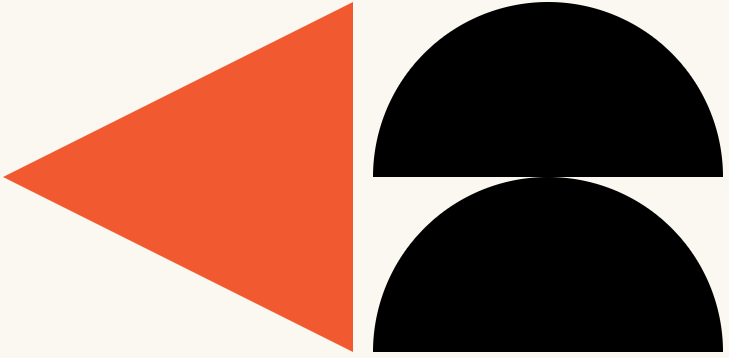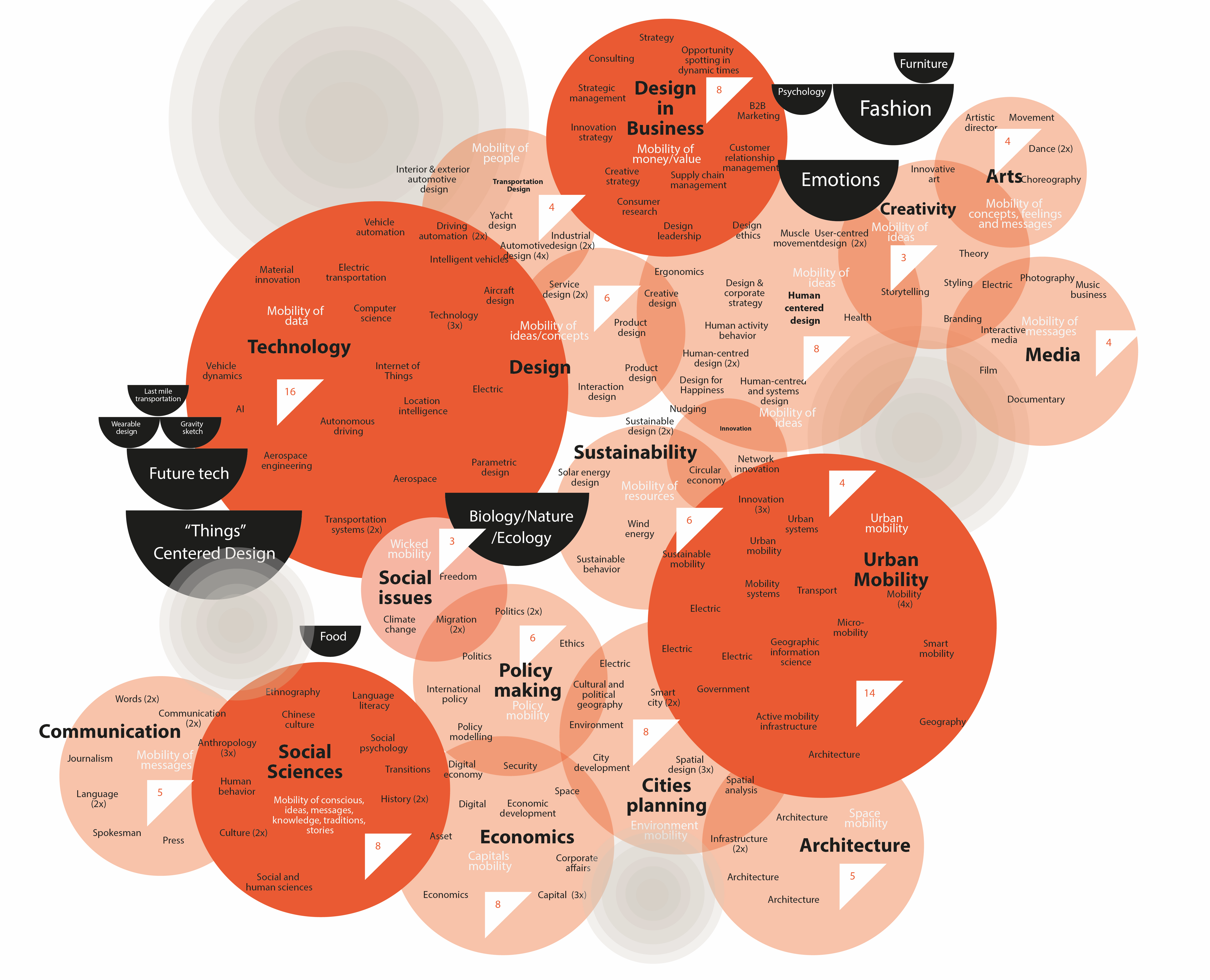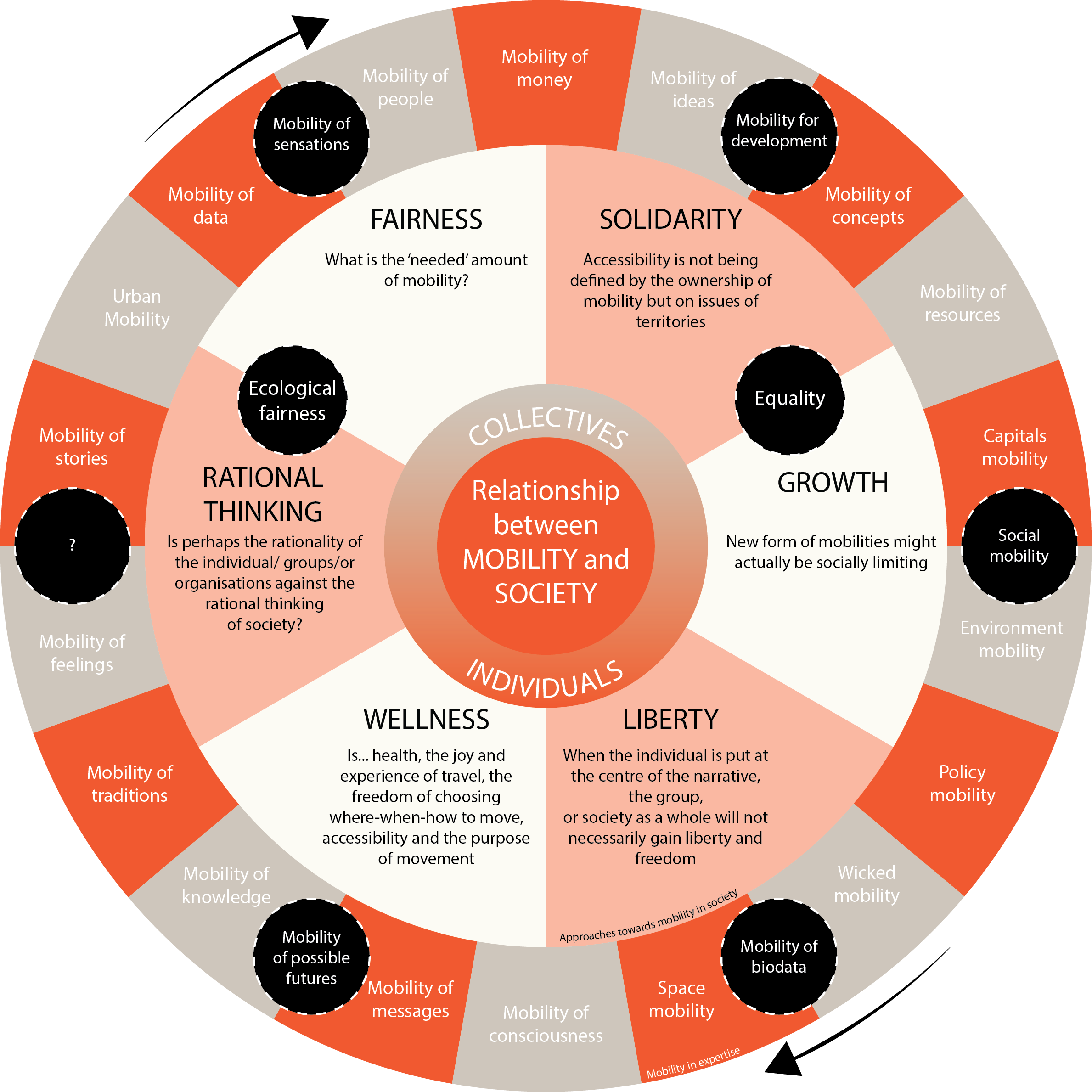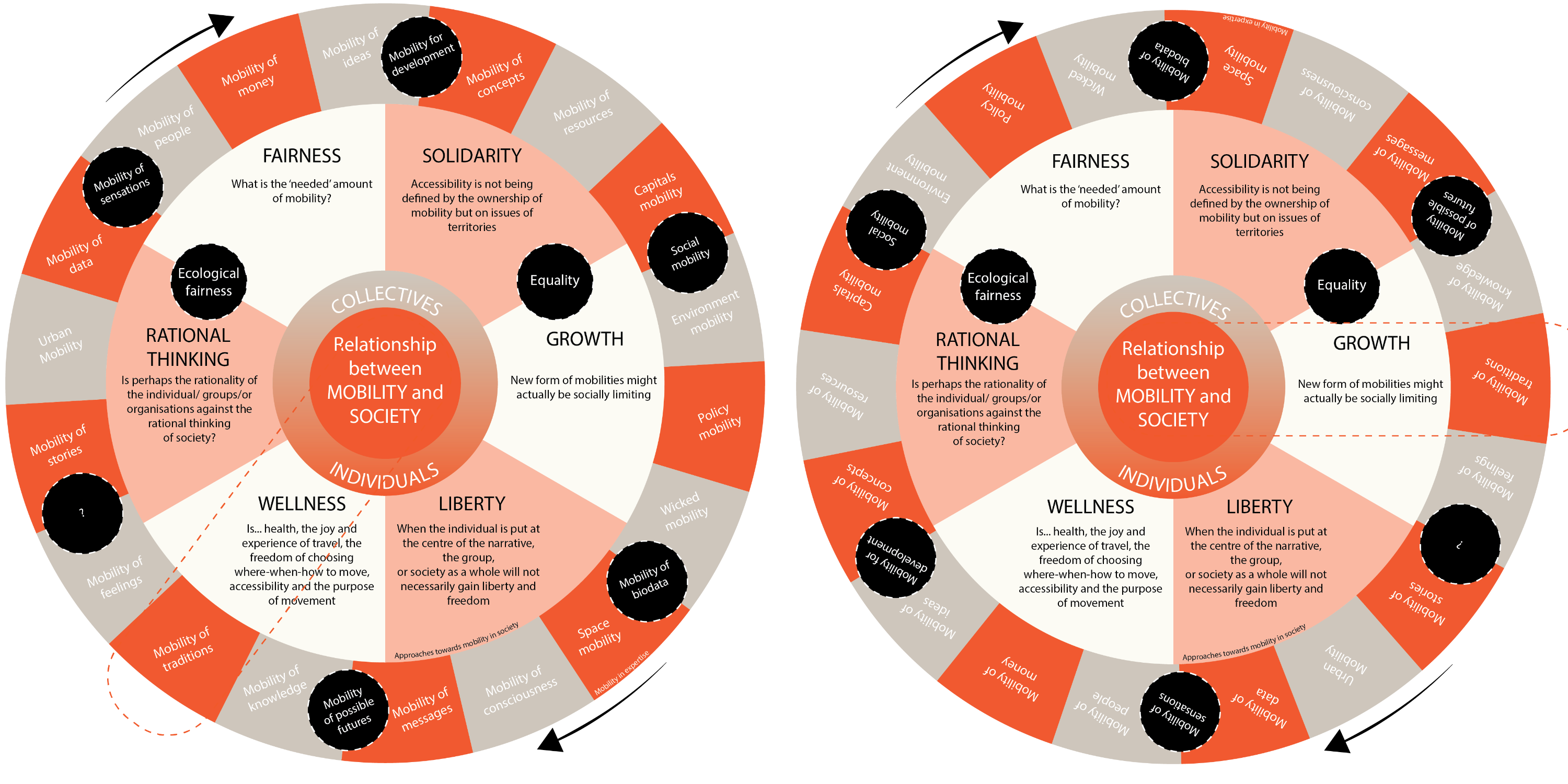Analyzing the Kick-off Mobility|Society workshop:
Emerging opportunities for a new mobility approach

Last June, a selected group of mobility researchers and industry professionals kicked off the Mobility|Society initiative in effort to introduce a new ‘school of thought’ within the field of mobility.
With this initiative, it is the intention to steer design research and practice towards developing a future society that is an intended consequence of mobilities.
It is the research aim to create a framework that allows us to unravel a multiplicity of narratives and research questions that matter for the future. During the kick-off, a workshop was hosted with a multidisciplinary group where current misconceptions and guiding principles that define the relationship between mobility and society were discussed.
Identifying different types of mobility
It is exciting to see the first outcomes of the gathering. The output data from the workshop was analysed and then two visualisations to interpret the information gathered were created. The first step was to identify how the different areas of expertise of the attendants are related to some form of mobility within society. You can identify the range of expertise represented in the visualisation below.
Each one of the bubbles represents a cluster of the types of mobility that are related to the areas of expertise of the participants. For example, experts in infrastructure and architecture work with space mobility, and experts in computer science, artificial intelligence, or automation work with mobility of data. The bubbles intersect with each other, expressing the different connections and relations that emerge from this clustering process. The dark orange bubbles represent the dominantly occurring fields of expertise, whereas the black half circles represent some areas of expertise that were missing, or rather, that are not represented in the group of experts. The gray radial bubbles represent the unidentified types of mobility that are still to be represented within the initial group.
Exploring mobility from multiple perspectives
Subsequently, the above findings were integrated with the approaches discussed during the workshop. These approaches were proposed as an outcome of exploring values that guide diverse cultures, contexts, religions, and countries. This was done to tackle mobility from multiple perspectives and visions of the world. Additionally, some of the main ideas that emerged within the discussions on those approaches were included to better understand how the participants perceived these values from a mobility perspective.
Collectives vs. individuals
The above visualization has a wheel shape that needs to be read from the center to the exterior of the wheel. The first ring expresses the constant tension between and within collectives and individuals. When debating about mobility within society, this was a consistent topic of discussions and a noteworthy iteration. Such tension between and within collectives and individuals was exemplified by the following: if everybody uses a car to go to work, to be consequently faster and freer in their movements, the city will be clogged by a traffic jam. The traffic jam is then a situation that prevents the community from being free in movement.
Integrating different values
The second ring shows the different values integrated to guide the discussions and one of the main insights gathered from each. These were: solidarity, growth, liberty, wellness, rational thinking, and fairness. There are an additional two dashed circles that each represent emerging approaches that are yet to be explored. The first one is ecological fairness, and it is an insight that came from the discussion within the fairness group. They proposed that society is not only shaped by humans but that it includes different actors, one being the environment; suggesting that the relations of mobility occur against a backdrop of a multilayered society. The second one is equality, and it emerged both in the solidarity and the growth discussion group, suggesting that mobility should not be thought of from the perspective of mobility for everyone but from the perspective of the mobility that every individual and collective needs, so it does not become socially limiting. From this, a multilayered society in constant interaction with its context emerges as an insight, adding to the previously expressed interaction within collectives and individuals.
Different shapes of mobility: what are we missing?
The outer ring represents shapes of mobility that emerged from the expertise clustering process previously explained in the first visualization. In addition, five extra shapes of mobility that emerged from the conversations in the workshops are placed in dashed circles, once more signifying that they are yet to be explored. These five are mobility of sensations, mobility for development, social mobility, mobility of biodata, and mobility of possible futures. One of these circles has a question mark, indicating that there are other shapes of mobility still to be identified, making us aware of the variety of diverse ways that mobility can exist, and how much there is still to be discovered.
We encourage you to share any other types of mobility that should be included from your point of view. If applicable and relevant, this will be integrated into the forthcoming framework.
The shape of the visualisation also indicates that the outer ring can be rotated to match the different approaches of mobility, always emphasizing the implicit and changing tension between and within individuals and collectives as previously explained.
Only the beginning
As a comprehensive outcome of the workshop, thereupon, it is suggested that society is a complex multilayered and multi-perspective system composed of individuals and groups of individuals generating collectives in constant interaction with each other in different and varied contexts. The type of interactions we had in the 90’s, for example, are not the same ones we have now, and the interactions we will have in 30 years will also be different from those of today. These interactions and relations can be designed and determined to a certain extent, which holds an enormous opportunity for mobility in relation to society and it is to be considered as an approach to study, understand and enhance these relations in an ever evolving and changing world.
You can stay updated on all the new discoveries during in this process via the Mobility|Society newsletter and website, and you can help shape the Mobility|Society discussions by sharing any other types of mobility that should be included in the framework soon to follow.
Please share any other types of mobility that should be included in this framework (via the short form below) to our six specific questions. Alternatively, in case you feel you have other ideas and insights to share that might benefit the construction of the Mobility | Society Framework, feel free to email us your thoughts.
TU Delft moving mobility forward
TU Delft | Faculty of Industrial Design Engineering aims to move forward design research in the field of mobility. The Mobility | Society initiative offers a platform for a new conversation. As designers looking at a complex future, we ask what role will mobility play in defining the way we move as society? In theory and practice.
At Delft University of Technology, we recognise that climate change, economic growth and urbanisation bring with them social challenges. TU Delft is working on innovative solutions for liveable, accessible and resilient cities with the aim of maintaining or creating an attractive and safe living environment for residents of (delta) regions at home and abroad. An integrated approach to infrastructure, water safety, smart mobility and the natural and built environment offers the best guarantee for finding answers to the challenges. Mobility | Society finds its roots in the deep knowledge that TU Delft researchers have to offer.


